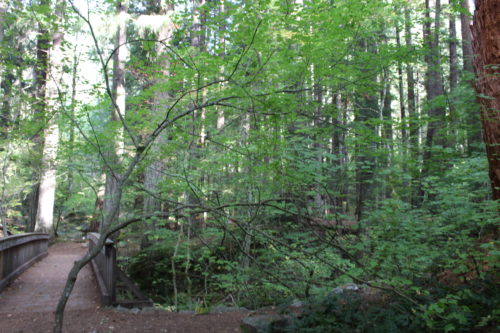Seasons In The Skagit: Fall
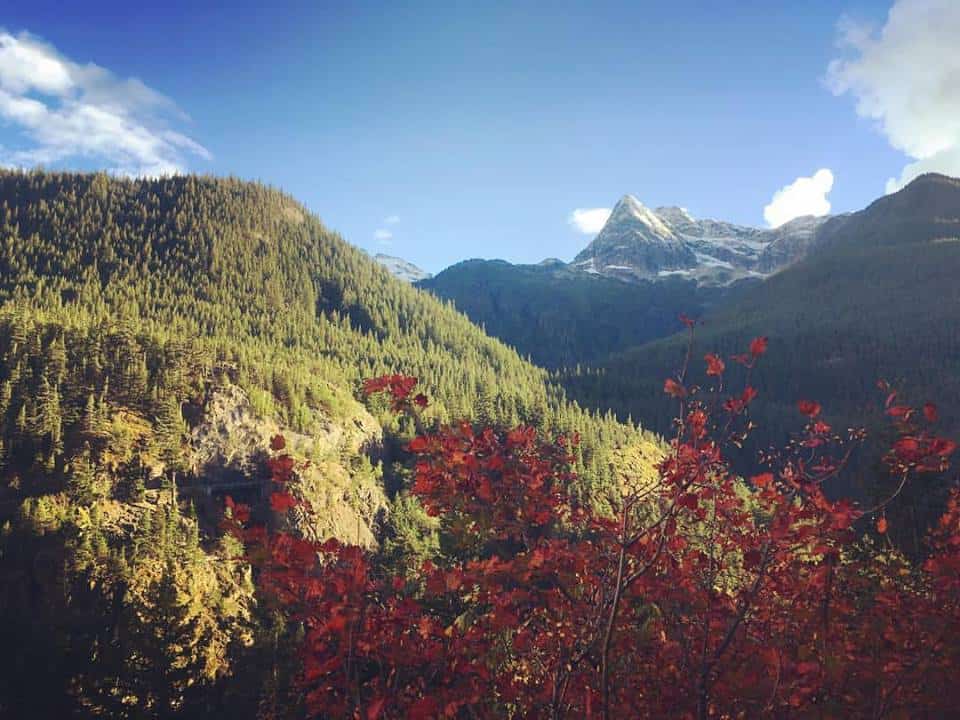
Fall
Hello everyone! We are moving towards the end of fall and the beginning of winter in the Skagit Valley. The leaves are falling from the trees here at Lake Diablo. As the days march slowly towards December we see the seasons changing all around us. The sun rises later in the morning and disappears behind the mountains early in the afternoon. The maple trees are close to bare. The Skagit gorge is awash with new cascades bolstered with fall rain.
Phenology at the ELC
What is phenology? Phenology is the study of cyclic and seasonal changes in nature, especially in regards to climate, plants, and animals. At the Environmental Learning Center and the Marblemount NCI property (the Blue House) we have several phenology plots that grads and staff regularly observe. We engage with phenology in the graduate program by conducting weekly plot checks on a weekly basis. Here are some notable changes that we have recorded in some of the plants at the ELC:
A Pacific Flowering Dogwood (Cornus nuttalli) near Sourdough Creek displayed its dramatic transition with vibrant colors.
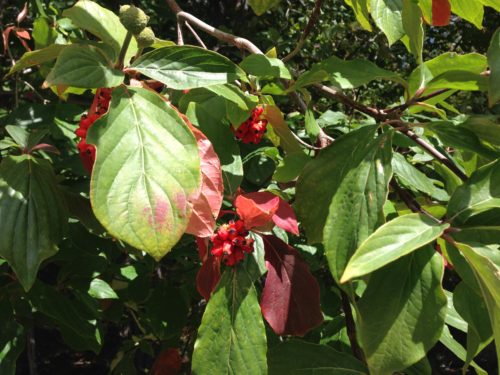
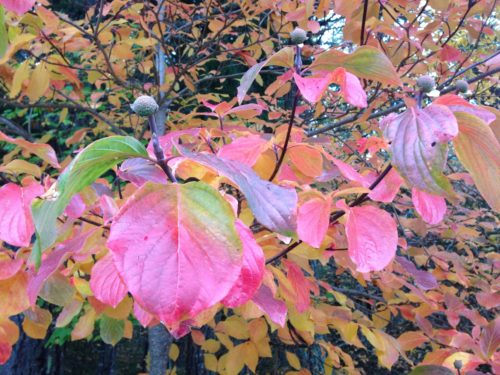
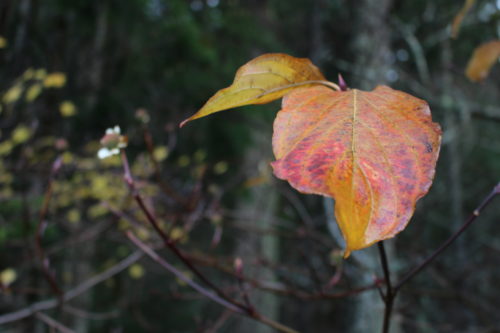
A Vine Maple (Acer circinatum) dropped its leaves in response to the cold
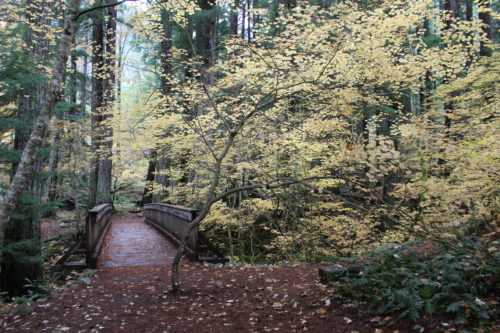
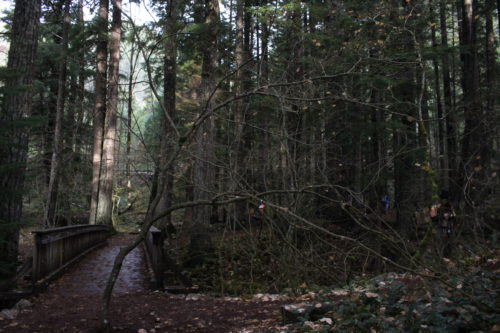
Devils Club (Oplopanax horridus) sheds its foliage
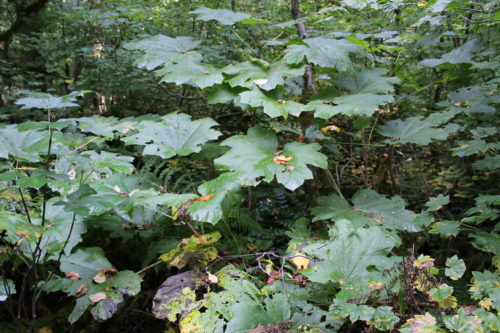
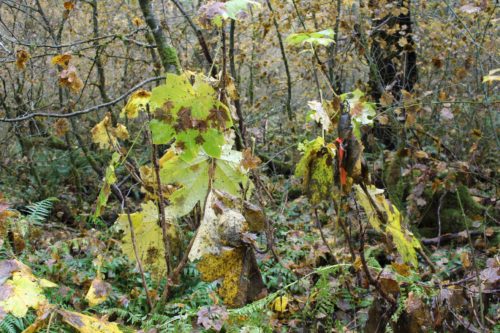
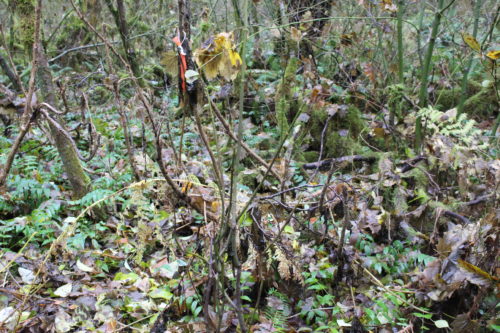
Science of the Season
So why are we seeing this brilliant color display? Well, plants are influenced by the amount of sunlight they receive during the day. As the days shorten, the decrease in sunlight affects the three main pigments that occur in most plants. These pigments are:
- Chlorophyll – the pigment that gives leaves their green color.
- Carotenoids – the substance responsible for yellows, oranges, and browns.
- Anthocyanins – this pigment produces a red color, like in apples and strawberries.
The chlorophyll in a plant spend all growing season aiding in the production of glucose. This glucose (sugar) is stored and used during the winter season when the plant is not making its own food.
As the length of daylight shortens the plants respond by producing less chlorophyll until eventually all production ceases. The lack of the green pigment unveils the reds and yellows of the carotenoids and anthocyanins waiting underneath.
Notable Events
It is not solely the plants in the Skagit valley that have undergone seasonal changes. We see the changes in many places. Here are some notable events that members of the NCI community have seen and recorded over the last month:
- Oct. 8- Sourdough Creek, our local meltwater creek, began running after being dry over the summertime
- Oct. 15- 7” of new snow at Washington Pass on Highway 20
- Oct. 23- A resident black bear begins hanging around by the apple tree near Diablo dam
- Nov. 4- The sun rose above Diablo Lake at 9:26 am, cresting Ruby Mountain on the south side. In previous months the sun had risen above the Skagit gorge which is much further north on the horizon.
- Nov. 14- A supermoon rose over Lake Diablo and the Upper Skagit
Sharing the Changes
It’s a powerful thing to see and feel the landscape preparing for a new season. It is my hope that I can share some of these transformations with the NCI community and beyond. I hope you enjoy this introduction to phenology. Please do not hesitate to contact me if you would like to engage in some way with phenology and the study of cycles in the natural world.
Cheers,
Smokey
Phenology Graduate Assistant
“Winter is an etching, spring a watercolor, summer an oil painting, and autumn a mosaic of all of them”
-Stanley Horowitz
All photos taken by Emily Brine aka Smokey.


